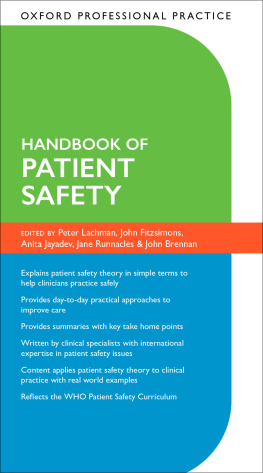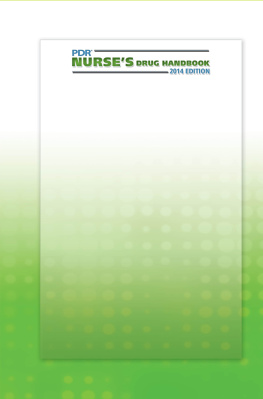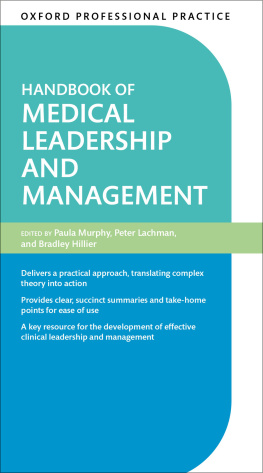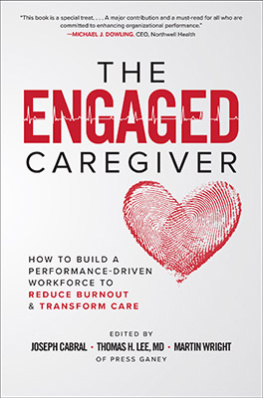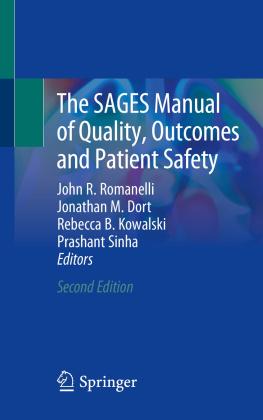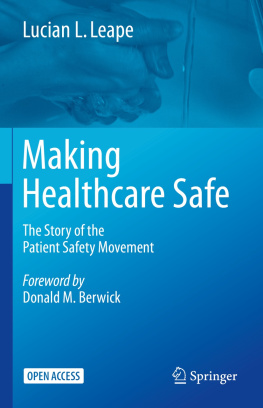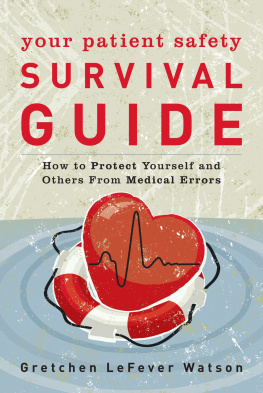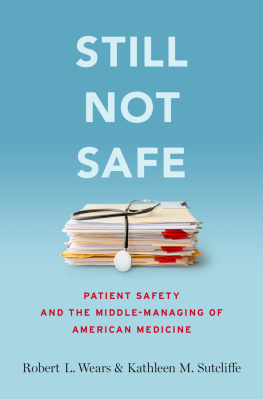Oxford Professional Practice Handbook of Patient Safety

Great Clarendon Street, Oxford, OX2 6DP,
United Kingdom
Oxford University Press is a department of the University of Oxford. It furthers the Universitys objective of excellence in research, scholarship, and education by publishing worldwide. Oxford is a registered trade mark of Oxford University Press in the UK and in certain other countries
Oxford University Press 2022
The moral rights of the authors have been asserted
First Edition published in 2022
Impression: 1
All rights reserved. No part of this publication may be reproduced, stored in a retrieval system, or transmitted, in any form or by any means, without the prior permission in writing of Oxford University Press, or as expressly permitted by law, by licence or under terms agreed with the appropriate reprographics rights organization. Enquiries concerning reproduction outside the scope of the above should be sent to the Rights Department, Oxford University Press, at the address above
You must not circulate this work in any other form and you must impose this same condition on any acquirer
Published in the United States of America by Oxford University Press
198 Madison Avenue, New York, NY 10016, United States of America
British Library Cataloguing in Publication Data
Data available
Library of Congress Control Number: 2021945574
ISBN 978-0-19-284687-7
eISBN 978-0-19-266232-3
DOI: 10.1093/med/9780192846877.001.0001
Printed in Great Britain by
Ashford Colour Press Ltd, Gosport, Hampshire
Oxford University Press makes no representation, express or implied, that the drug dosages in this book are correct. Readers must therefore always check the product information and clinical procedures with the most up-to-date published product information and data sheets provided by the manufacturers and the most recent codes of conduct and safety regulations. The authors and the publishers do not accept responsibility or legal liability for any errors in the text or for the misuse or misapplication of material in this work. Except where otherwise stated, drug dosages and recommendations are for the non-pregnant adult who is not breast-feeding
Links to third party websites are provided by Oxford in good faith and for information only. Oxford disclaims any responsibility for the materials contained in any third party website referenced in this work.
Foreword
Helen Haskell, Hussain Jafri, and Margaret Murphy
WHO Patients for Patient Safety Advisory Group
Patient safety is a field with many moving parts. It cuts across disciplines, professions, healthcare systems, business sectors, and governments. It ranges from the simple to the complex, from the intimately personal to the broadly theoretical. Perhaps more than any other area of healthcare, it embraces multiple and sometimes incompatible models of management, which have themselves evolved and changed over the years with surprising fluidity.
This sprawling combination of the philosophical and the practical is the necessary underpinning of healthcare. Without patient safety, medical treatments lose their purpose. Care flounders and can become its opposite: a source of harm. In all too many instances, in all too many parts of the world, this occurs on a regular basis. As patient leaders in patient safety, we are in a position to see the sad outcomes. For patients, safety can be everything.
In spite of the fact that patient safety is a relatively young field, there has been concern in recent years that it has ceased to be a priority of the healthcare establishment, especially in higher-income countries. Several global initiatives have aimed to reverse that trend, among them the 201419 Global Ministerial Summits on Patient Safety (interrupted by COVID-19 in 2020); the 2020 G20 Declaration, which names patient safety as a global priority; and the Global Patient Safety Action Plan approved by the World Health Assembly in 2021. The underlying concept is that healthcare must be made safe if the goal of universal healthcare is to have real meaning.
The goal of the present book is to address this gap by laying out the components of patient safety in a readable, yet comprehensive fashion, in a practical work of reference for anyone involved in healthcare. Its chapters include straightforward solutions that can be adopted and practised even in low-resource environments; these solutions include details of process, hygiene, medication safety, and communication. An important thread is formed by the concepts of teamwork and of flattening the hierarchy so that all can speak up for safety. Even more important is the emphasis on the role of the patient in both enabling and producing healthcare.
Why is patient engagement so important? Because, in the end, patient safety is about patients. Healthcare professionals cannot make healthcare safe without knowing what their patients experience, or without the insights and observations of patients regarding their processes and treatments. For patients, it is critical to learn to educate themselves and to advocate their own safety and that of their family members. Patients cannot, however, make themselves safe without the help of their healthcare providers. Only together can we achieve our goals.
As patient safety continues to evolve, the combined wisdom of patients and providers may yet turn out to be the major element that allows it to progress towards its goal of (dare we say it?) zero harm. This handbook, with its combination of practicality and forward thinking, is an indispensable guide along the way.
Contents
Ahmeda Ali
General Practitioner and Assistant
Director of Dublin Northeast ICGP Training Scheme
Irish College of General Practitioners
Dublin, Ireland
Chapter: The culture and system of patient safety
Jay Banerjee
Consultant in Geriatric Emergency Medicine
University Hospitals of Leicester NHS Trust
Leceister, England
Chapter: Safety in the emergency department
Rob Bethune
Consultant Surgeon
Royal Devon and Exeter NHS Foundation Trust
Exeter, England
Chapter: Safety in the operating theatre
Pallavi Bradshaw
Deputy Chief Medical Officer
AXA Health
London, England
Chapter: Open disclosure
Jeffrey Braithwaite
Professor and Founding Director
Australian Institute of Health Innovation, Macquarie University
Sydney, NSW, Australia
Chapter: Resilience theory, complexity science, and Safety-II
John Brennan
General Practitioner and Quality Improvement Faculty
Royal College of Physicians of Ireland
Dublin, Ireland
Chapter: Safety in primary care and general practice
Karen Britton
Lead Nurse Deteriorating Patient and Resuscitation
Frimley Health Foundation Trust
Frimley, England
Chapter: Preventing and limiting deterioration on the medical wards
Kate Churruca
Postdoctoral Research Fellow
Australian Institute of Health Innovation, Macquarie University
Sydney, NSW, Australia
Chapter: Resilience theory, complexity science, and Safety-II
Robyn Clay-Williams
Associate Professor
Australian Institute of Health Innovation, Macquarie University

